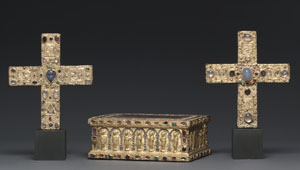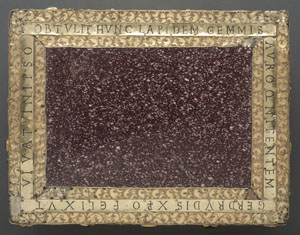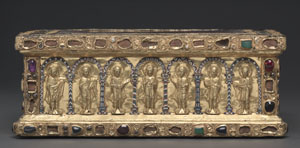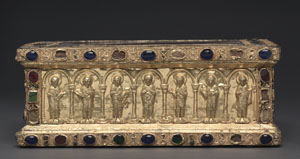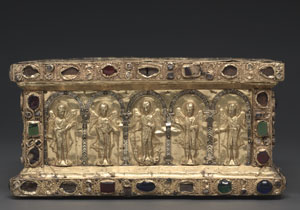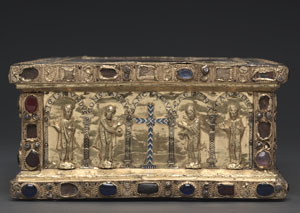Portable Altar of Countess Gertrude
The Cleveland Museum of Art, gift of the John Huntington Art and Polytechnic Trust
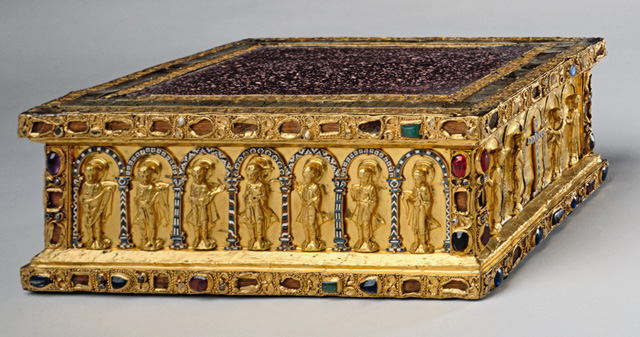
 Select the images above and right to zoom
Select the images above and right to zoom
This portable altar belongs to a group of precious liturgical objects commissioned by Countess Gertrude of Braunschweig shortly after the death of her husband, the powerful Count Liudolf in 1038. It was destined for the collegiate church of St. Blaise, founded in 1030 to serve as the couple's burial place. While a lengthy inscription in metric verse, placed around the porphyry altar stone, prominently records the patron's name and pious intentions, the choice of materials, quality of craftsmanship, and iconographic program spell out her more worldly ambitions.
The altar's front, clearly distinguished as such by its fine cloisonné enamel arcade, shows the full length figures of Christ in the center with three apostles on either side. The back panel mirrors the arrangement on the front, but here the arcades are worked in repoussé and the apostles flank the Virgin Mary, her hands raised in a gesture of prayer and intercession. Completing the altar's decoration on one side are four scepter-bearing angels under nielloed arcades flanking St. Michael killing the dragon, and an Adoration of the True Cross on the other. Emperor Constantine and his mother, Helena, are placed on either side of the precious enameled cross, with the Burgundian king Sigismund and the Ottonian empress Adelheid following suit, a choice that attests to Gertude's acute sense of dynastic alignment and pious tradition.
According to the prescriptions of the Seventh Ecumenical Council of Nicaea of 787, every consecrated altar was to contain sacred relics. The portable altar of Countess Gertrude was no exception. Of the various relics listed in the inventory of 1482, those of Sts. Hermes, Bartholomew, Vincent, Adelheid, Gertrude, Marcian, and others are still preserved today. They were wrapped in textiles, stuffed into a richly decorated silk pouch and inserted into the altar through a trap door on the altar's underside. This oblong reliquary pouch was sewn together with a few irregular stitches from a single piece of light-green silk. Its woven figural decoration, which consists of pairs of opposing lions arranged in several narrow registers, is reminiscent of Near Eastern designs and Islamic textiles produced by Mudejar artists in thirteenth-century Spain. An accompanying cedula, or parchment strip with an identifying inscription, suggests that the bag used to contain relics of the arm of one of the Twelve Apostles, namely that of St. Bartholomew. Together with other precious relics, some of which were likewise wrapped in silk and linen textiles, the apostle's remains (multiple fragments of soft tissue rather than bone) were found inside the portable altar of Countess Gertrude of Braunschweig in 1985, when the trap door on the reliquary's underside was opened for the first time since the late nineteenth century. According to early Christian tradition, St. Bartholomew was flayed alive and beheaded, which may explain the presence of soft tissue (rather than bone) and its identification as the "arm" (brachium) of the apostle.
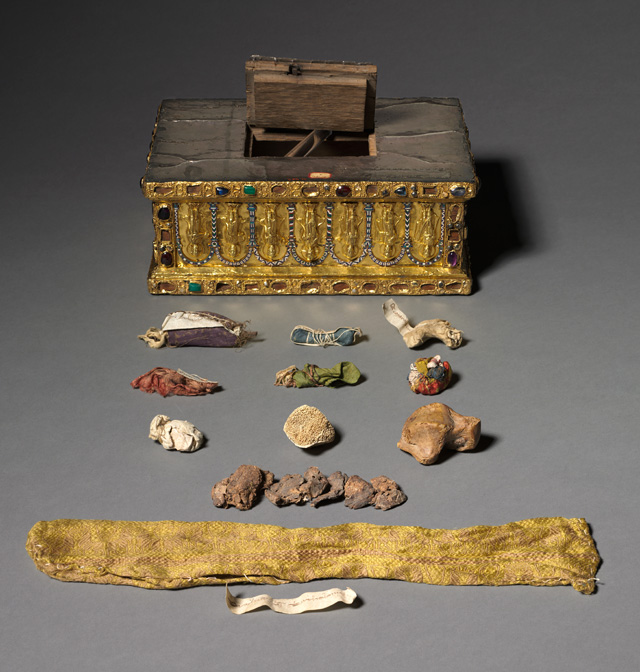
 Select the image above to zoom
Select the image above to zoom
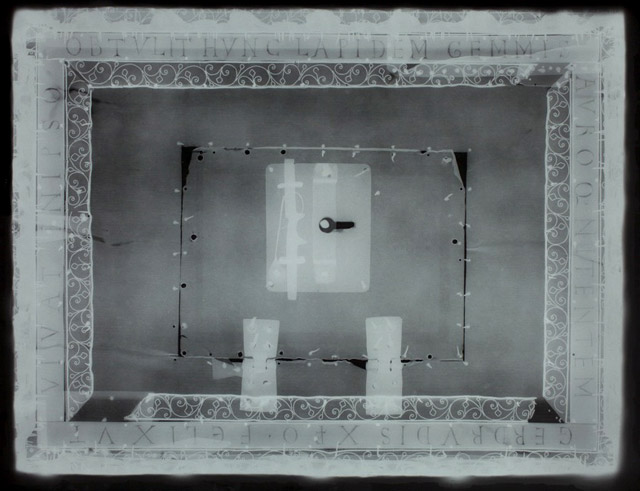
X-ray image of the Portable Altar, top view.

